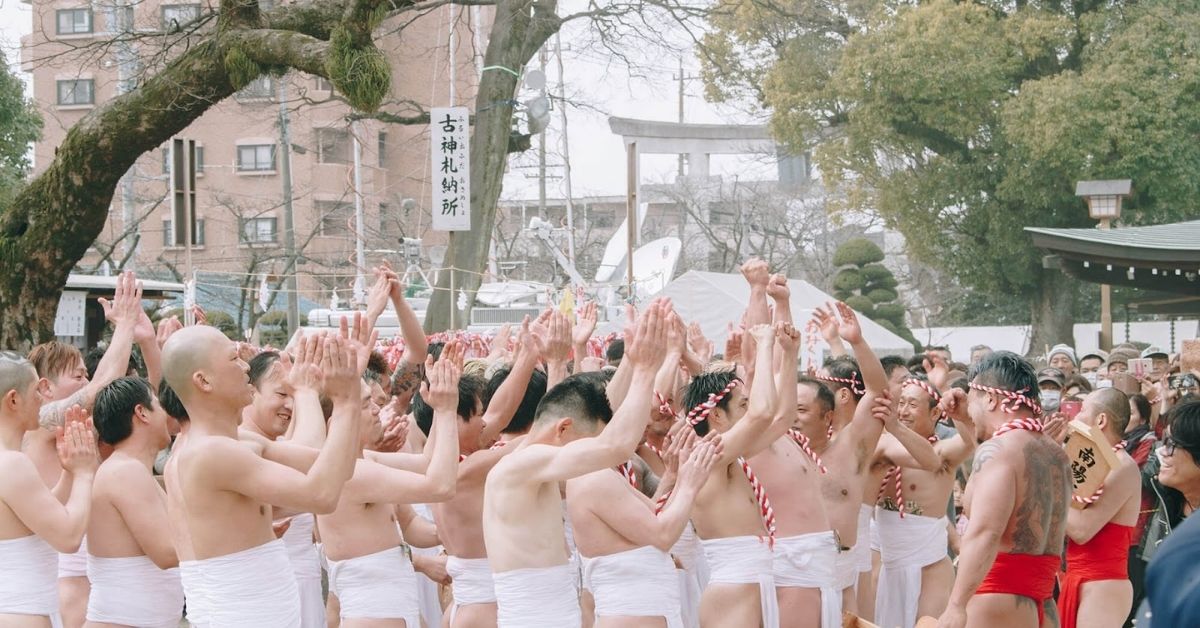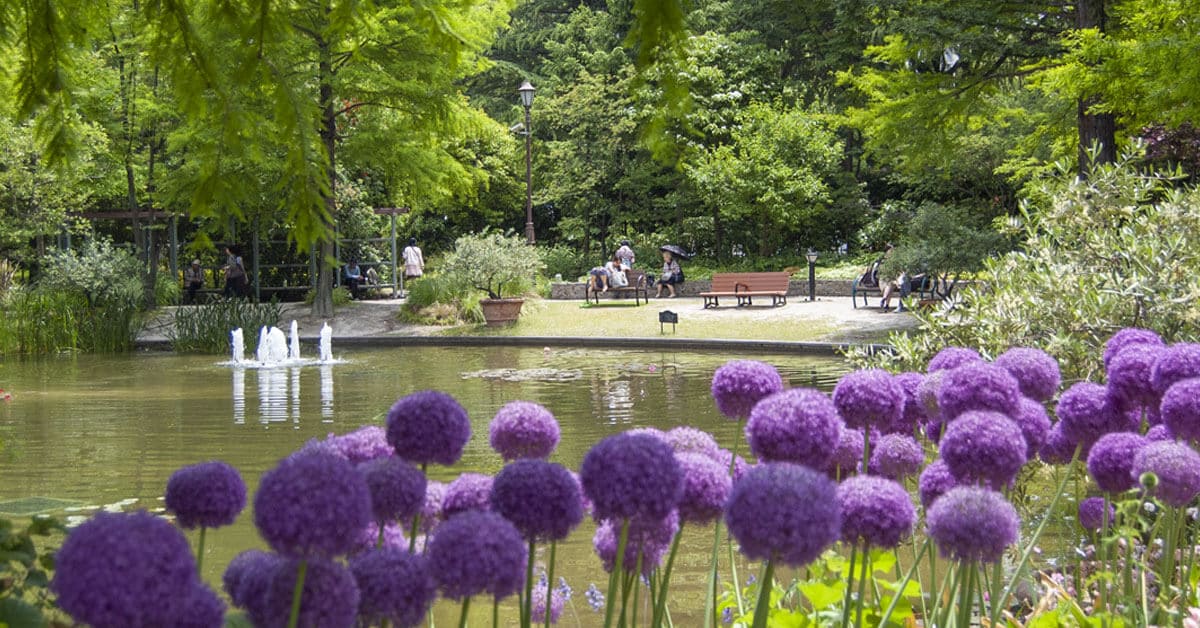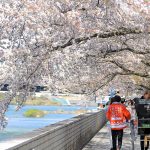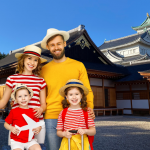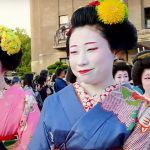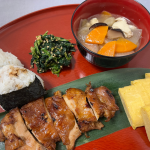Hydrangea is a flower with a long history and tradition in Japan. Because of its beauty and special significance, Japanese people adore hydrangea flowers the same way that they do Sakura flowers during spring.
If the plum blossom is a sign of early spring, the hydrangea (Ajisai in Japanese) is a sign that summer is approaching. The hydrangea blooming season starts in early June and lasts until mid-July, coinciding with the Japanese rainy season. Hydrangeas bloom in various colors, ranging from white, blue, and turquoise to pale red and dark purple.
Article Contents
The Significance of Hydrangea in Japan
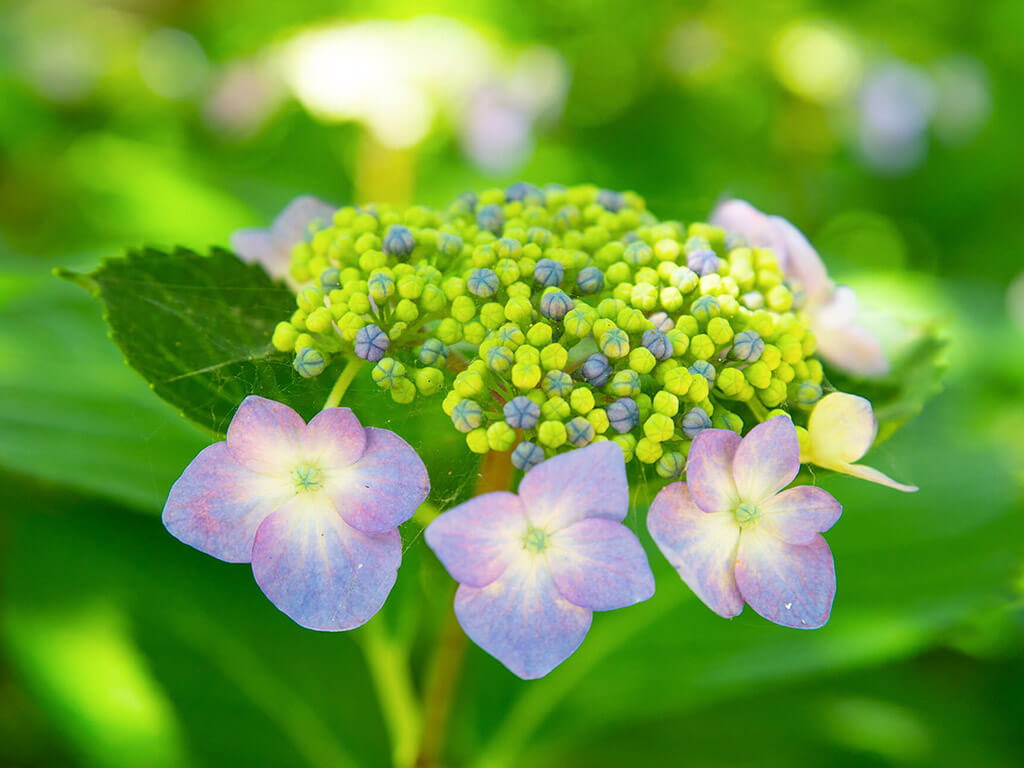
It is said that the history of the hydrangeas dates from the Nara period (710-794) when they began to appear in various poems. Later, during the Edo period (1618-1868), the flower was honored by the Samurai due to its ability to change colors.
Hydrangea is a type of flowering plant with over 70 varieties native to the Americas and Asia. In Japan, the most famous native variety is the Hortensia macrophylla, which grows wild across the country.
In Japanese, another name for hydrangea is “Nanahenge,” which means “changing seven times.” This is because the color of its petals changes depending on the pH of the soil during its growth. Based on the soil’s pH, the petal colors can vary from dark blue, light blue, and light purple to purple and white. Moreover, this variability causes the flowers to appear different at various times. The delicate and subtle combination of colors makes the hydrangea a beloved flower. This distinctive characteristic has given the flower symbolic meaning in Japanese literature.
In Japanese poems and other artworks, the hydrangea represents a changing and fickle heart. Because the hydrangea can change color according to its environment, it is also often associated with what is imperishable and immortal.
Generally, hydrangeas grow on the grounds of temples and shrines, in gardens, parks, and along riverbanks. Hydrangeas in full bloom are a striking display that you shouldn’t miss if you are in Japan during this season. Rainy days are the best time to enjoy the Ajisai, as the petals look especially beautiful when they shine under the raindrops and morning dew.
Colorful Hydrangea Spots Around Aichi
You too can experience Japan’s rainy season by viewing hydrangeas in full bloom! Here are our top recommendations for seeing hydrangeas in Aichi Prefecture.
Tsuruma Park (Nagoya)
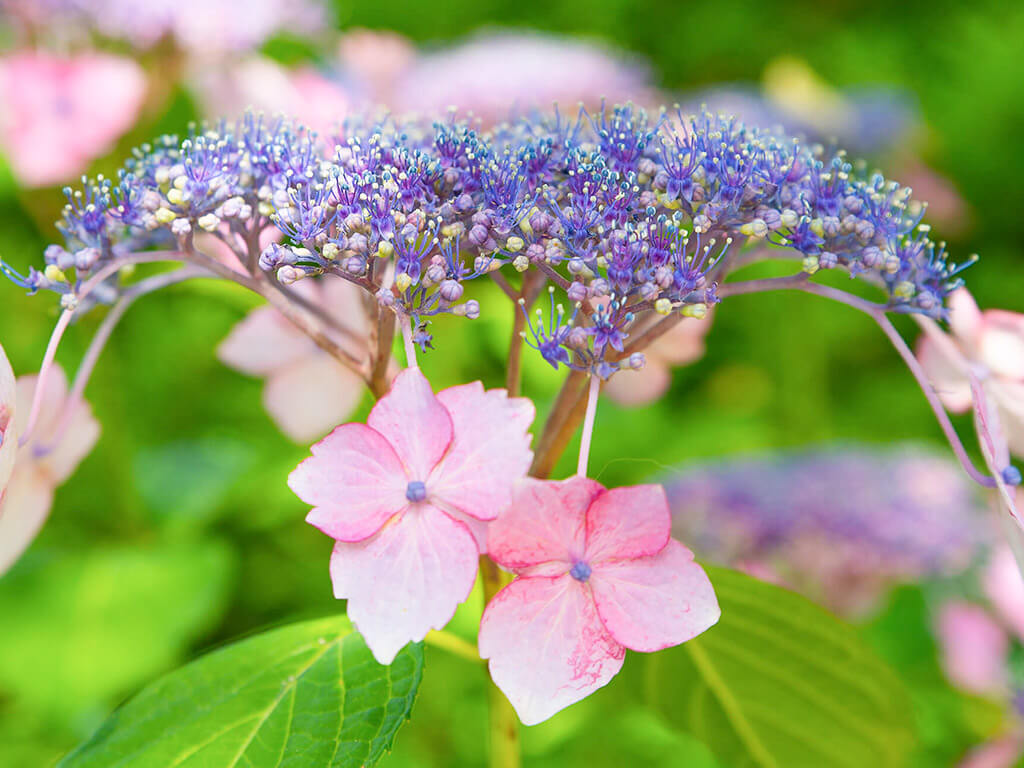
Although best known as one of the 100 best places in Japan to see cherry blossoms (Sakura) in bloom, Tsuruma Park is also a great place to enjoy hydrangeas and Japanese iris flowers, which bloom during this season.
In the southern part of Tsuruma Park, next to the baseball field, there is a road called the Hydrangea Walkway, which has around 2,300 hydrangea flowers.
Tsuruma Park (鶴舞公園)
Best Time: mid-June
Entry Fee: Free
Opening Hours: Open 24 hours
Address: 1-1 Tsurumai, Showa Ward, Nagoya, Aichi 466-0064
Access: Take the Tsurumai line or the JR Chuo line to Tsurumai station. From there, it is a 1-minute walk.
Website (Japanese only) | Google Maps
Chayagasaka Park (Nagoya)
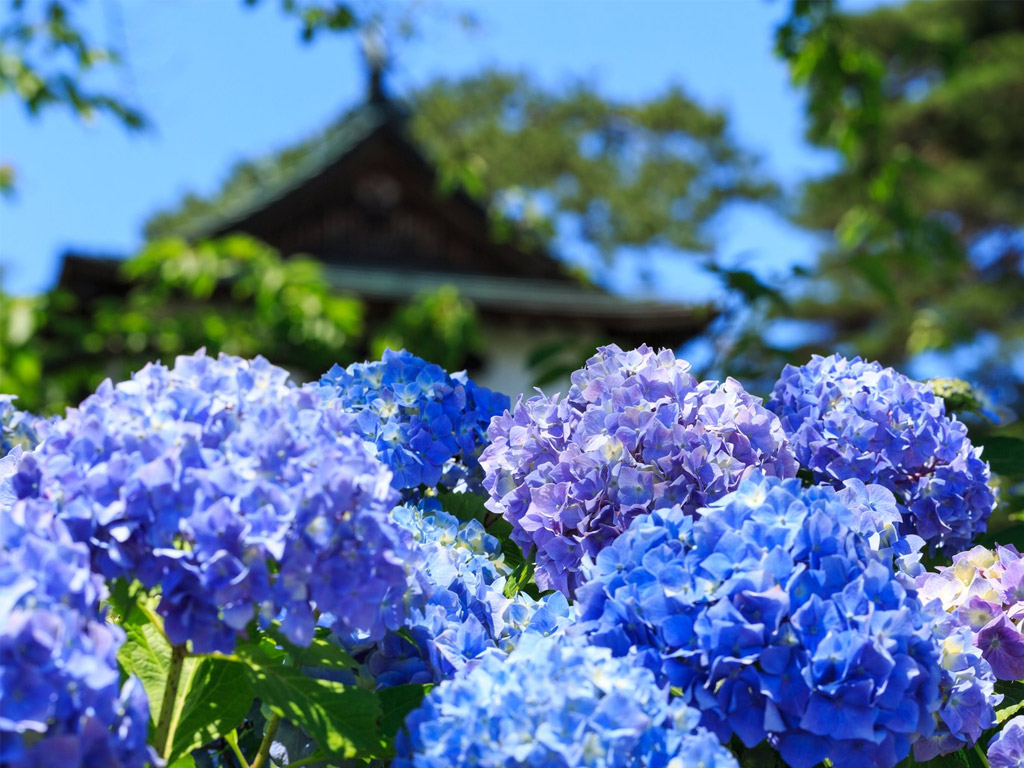
Located in the eastern part of Nagoya, Chayagasaka Park is filled with 4,300 hydrangea flowers. The park is built around Chayagasaka Pond and has walking paths running throughout. It is a great place to escape the city’s hustle and get some fresh air.
Chayagasaka Park (茶屋ヶ坂公園)
Best Time: mid-June
Entry Fee: Free
Opening Hours: Open 24 hours
Address: Shirutani Nabeyauenocho, Chikusa Ward, Nagoya, Aichi 464-0017
Access: Take the Meijo line to Chayagasaka Station. From there, it is a 7-minute walk.
Google Maps
Katahara Onsen Ajisai No Sato (Gamagori)
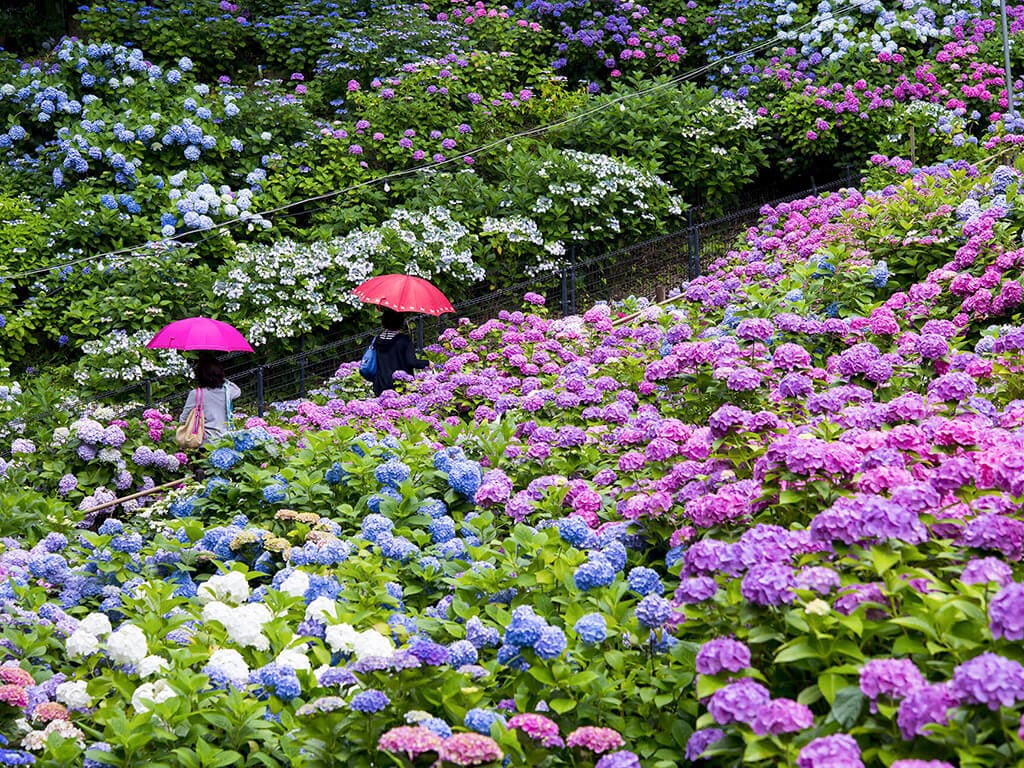
Located in Mikawa Bay, Katahara Onsen is an area of hot springs well known for its large hydrangea garden called Ajisai no Sato or Hydrangea Village.
Fifty thousand of these magnificent flower shrubs embellish the shore of a scenic lake. And at nightfall, the garden lights up, giving a magical air to the already beautiful lake.
Katahara Onsen Ajisai No Sato (形原温泉 あじさいの里)
Best Time: June 1st ~ 30th, 2024
Opening Hours: 8:00 ~ 21:00; light-up event: 17:00 ~ 21:00
Entry Fee: Adults 500 yen, free for children under 15 years
Address: 28-1 Ichinosawa, Kanehiracho, Gamagori, Aichi 443-0102
Access: From Nagoya Station, take the JR Tokaido line to Gamagori station. During the Ajisai festival, a special direct bus will run from Gamagori Station (520 yen one way)
Website (Japanese only) | Google Maps
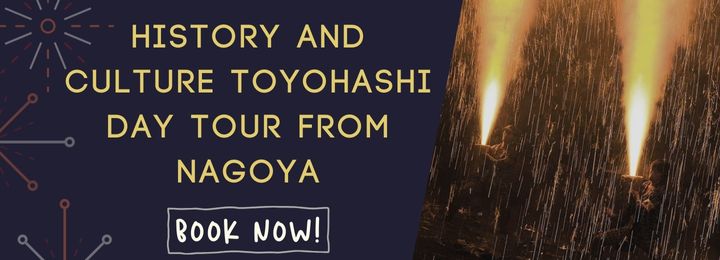
Mimo Jinja (Ichinomiya)
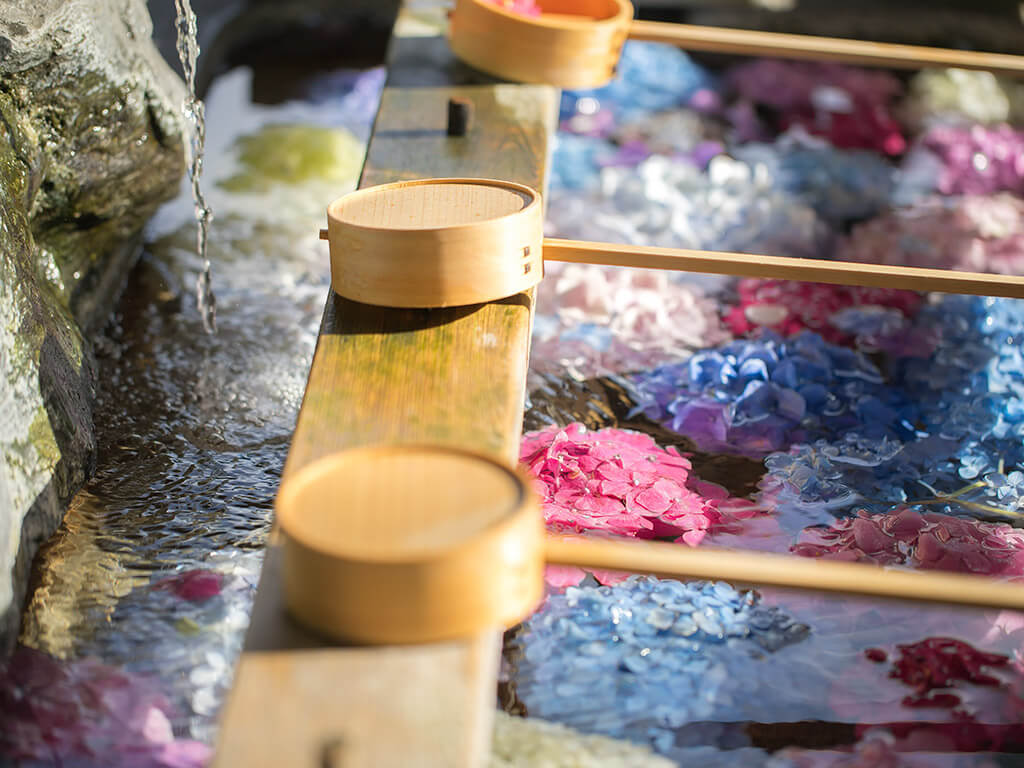
This small shrine is very popular for its annual Bisai Ajisai Festival. During this festival, more than 8,000 hydrangea shrubs from 70 different varieties bloom around the shrine.
In addition to the blooming hydrangea bushes, the Temizuya (a small basin of water located at the entrance to Shinto shrines for purification) is filled with colorful hydrangea flowers every year. The flower-filled water basin is a popular spot, attracting thousands of visitors annually to take pictures.
Mimo Jinja (御裳神社)
Best Time: early to mid-June
Entry Fee: Free
Opening Hours: 10:00 – 16:00; light-up event on June, 15th (Sat) & 16th (Sun) from 19:00 – 21:00
Address: 1145 Miyanishi, Sanjo, Ichinomiya, Aichi 494-0003
Access: Take the Meitetsu train to Ichinomiya or take the JR train to Owari Ichinomiya station. Ichinomiya station and Owari Ichinomiya station are connected. You can take the Metitestu “Q” bus from any of the stations and get off at the “Bisai Chōsha Zen” stop. From there, it’s a 15-minute walk.
Google Maps
Otsuka Shokaiji Temple (Inazawa)
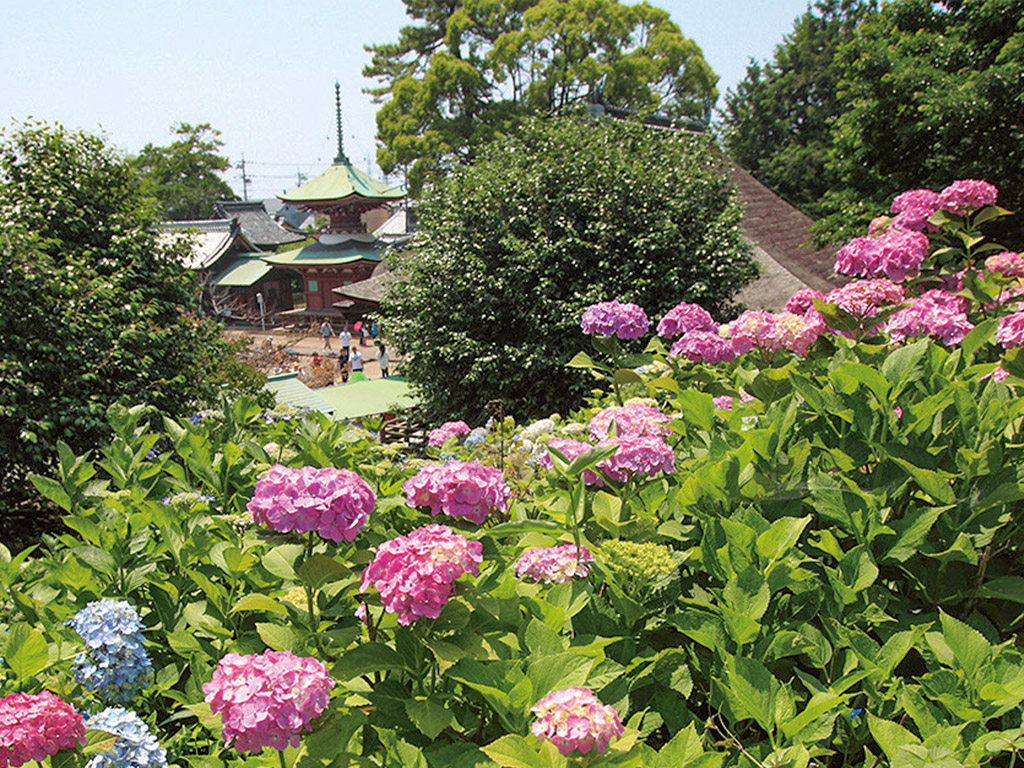
Otsuka Shokaiji Temple is home to around 10,000 hydrangea flowers of roughly 90 different varieties.
Moreover, the temple is part of the Otsuka Seikaiji Historical Park, which includes numerous cultural assets such as the main hall, the Hoto Pagoda, and the Tahoto Pagoda. Situated just a short train ride from Nagoya, this temple is worth the trip.
Otsuka Shokaiji Temple (大塚性海寺)
Best Time: early to mid-June
Entry Fee: Free
Opening Hours: 9:30 – 22:00
Festival Dates: June, 1st (Sat) to 16th (Sun)
Address: 1-33 Otsuki Minami, Inazawa, Aichi 492-8214
Access: Take the Meitetsu train to Konomiya station. From there, it’s a 30-minute walk. On Saturdays and Sundays during the festival, a free shuttle bus will run between Meitetsu Konomiya Station and the festival site every 30 minutes.
Website (Japanese Only)| Google Maps
Honkoji Temple (Kota)
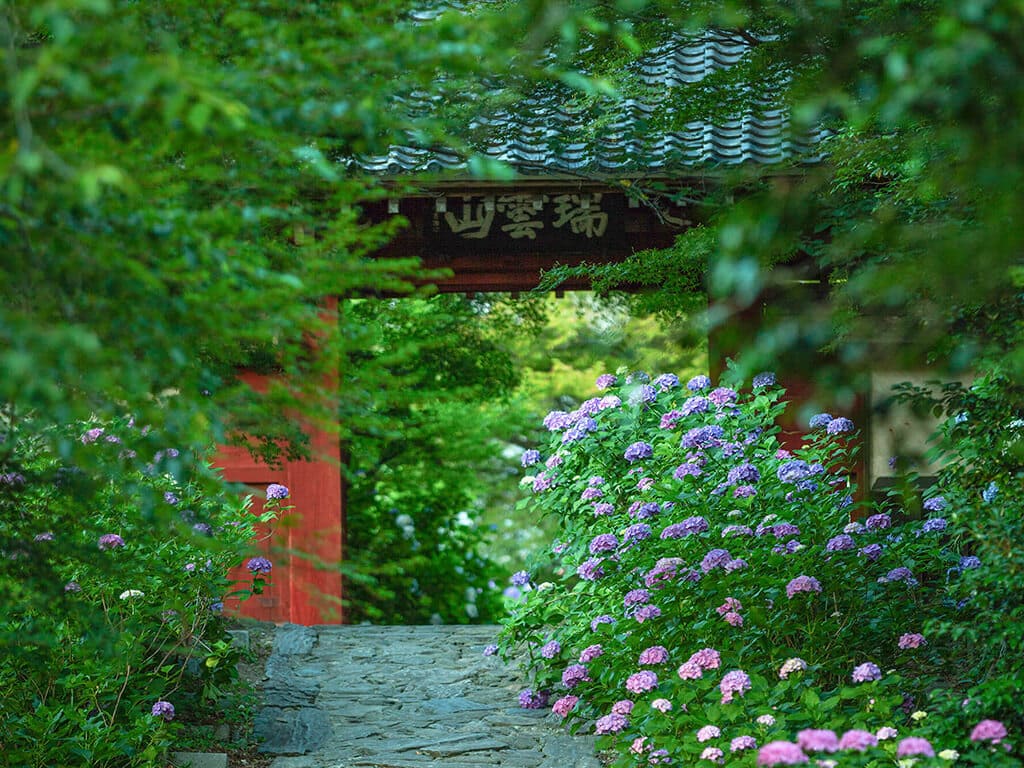
Honkoji Temple, the family temple of the Fukozu-Matsudaira clan, is also known as the Temple of Hydrangeas in Mikawa. Approximately 10,000 hydrangea shrubs bloom around the temple, adorning it with various pastel shades.
Additionally, small stalls are selling local products during the hydrangea festival making the atmosphere very lively.
Honkoji Temple (本光寺)
Best Time: early to late June
Entry Fee: Free
Opening Hours: 6:00 ~ 18:00
Address: 17 Fukamizo, Uchiyama, Kota-cho, Nukata-gun, Aichi 444-0124
Access: Take the JR Tokaido line and get off at Sangane Station. It’s a 9-minute walk from the station.
Website (Japanese only) | Google Maps
Hydrangea Road – Sanganesan Skyline (Nishio)
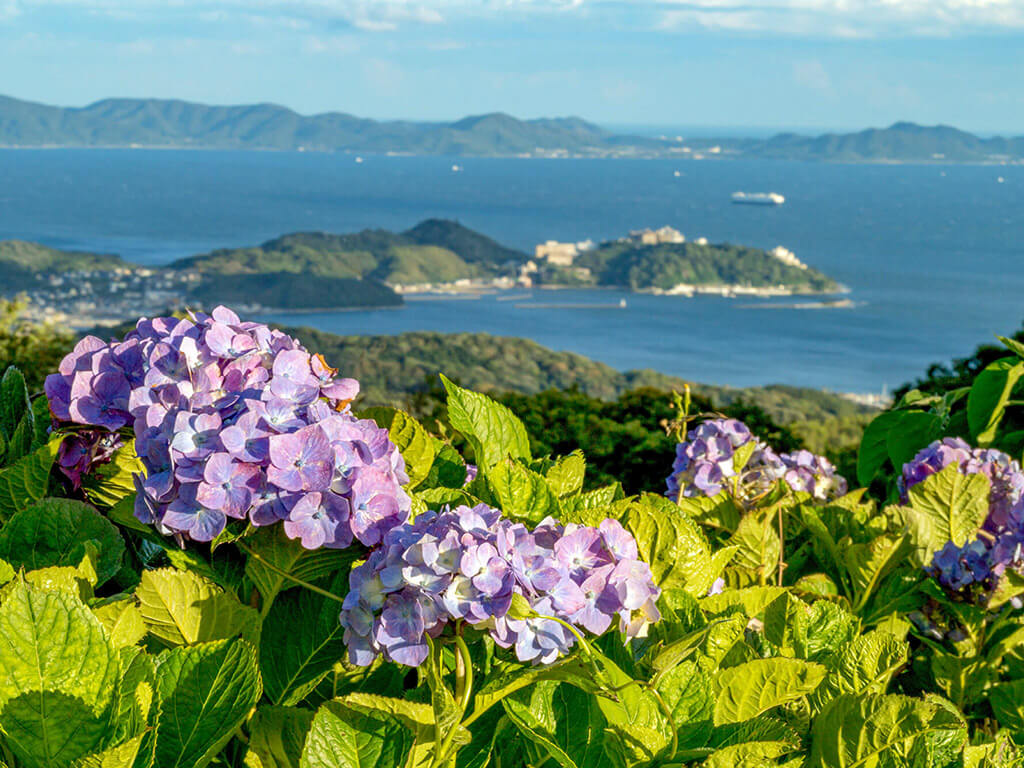
The Sanganesan Skyline is a 5.1-kilometer scenic drive along the ridge of Mount Sangane, stretching from Nishio City to Katahara Onsen in Gamagori. Driving this road offers beautiful panoramic views of Gamagori and the sea.
With 70,000 hydrangeas blooming along the road, it’s easy to see why it’s nicknamed the Ajisai Line. Moreover, if the 70,000 hydrangeas along the roadside are not enough, another 10,000 are located around the parking area at the peak.
Hydrangea Road – Sanganesan Skyline (あじさいロード三ヶ根山スカイライン)
Best Time: June to early July
Entry Fee: Motorcycle 280 yen, small vehicle 420 yen, microbus 1,100 yen, bus 1,760 yen
Opening Hours: 8:00 – 20:00
Address: Ushikorobi 49-1 Kanehiracho, Gamagori, Aichi 443-0102
Access: The skyline is only accessible by vehicle. It takes about 90 minutes from Nagoya.
Google Maps
Kokayama Kotokuin Temple (Toyoake)
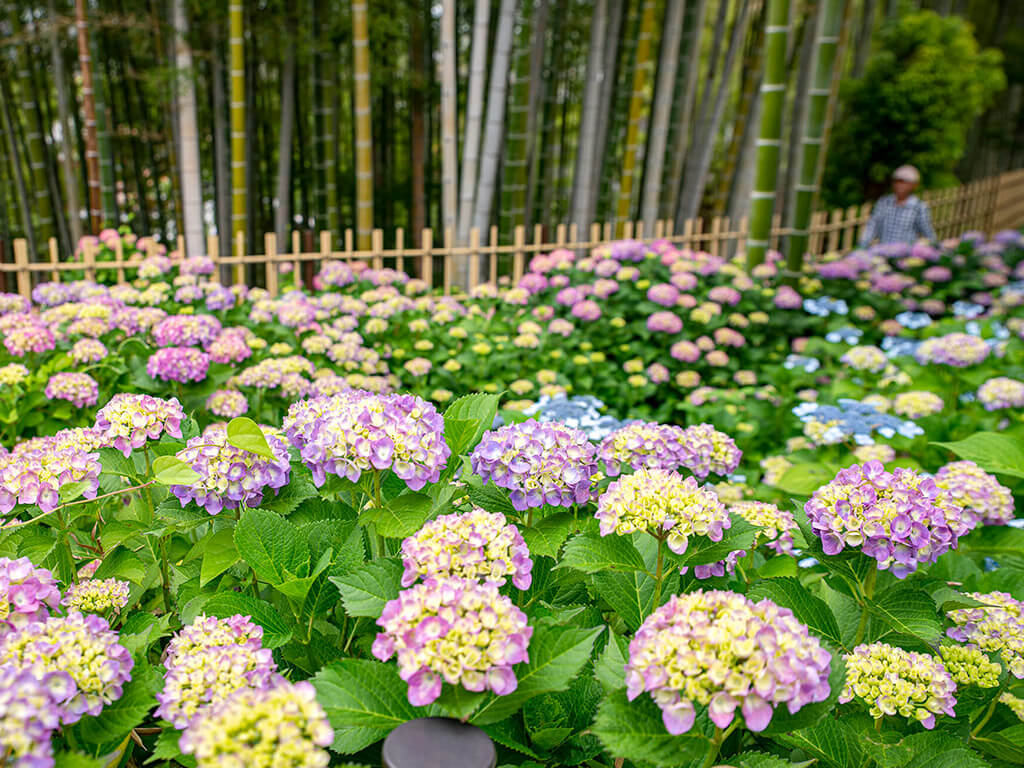
Kokayama Kotokuin Temple was relocated from Koyasan (Wakayama Prefecture) to Aichi Prefecture in 1869. The temple is situated in an area famous for the Battle of Okehazama, which took place on June 12, 1560, when 2,500 soldiers under the command of Oda Nobunaga defeated the 25,000 invading troops of Imagawa Yoshimoto.
The gardens around the temple, surrounded by large bamboo trees and hydrangea flowers, create a mystical and spectacular landscape.
Kokayama Kotokuin Temple (香華山 高徳院)
Best Time: Early to mid-June
Entry Fee: Free
Opening Hours: Open 24 hours
Address: Minamiyakata 3-2 Sakaecho, Toyoake, Aichi 470-1168
Access: From Nagoya Station, take the Meitetsu train to Chukyo Keibajomae. From there, it’s a 7-minute walk.
Website (Japanese only) | Google Maps
This post was last updated in June 2024.
Although we strive to provide you with the most accurate and up-to-date information possible, please note that changes may occur nonetheless. We recommend you confirm any relevant information such as event cancelations or changes, opening hours, or possible restrictions using a direct source. Please keep in mind that these sources might be only available in Japanese.
Did you enjoy this article?
Make sure to also check out our other posts about Nagoya and trust us if we say Nagoya is not boring!
Be sure to follow us on Facebook for regular updates on Nagoya, and see our Instagram for pictures and stories about the city!
Tag us 📲
If you have visited any of these hydrangea spots in/around Nagoya or found a few other spots please share your experience and tag us on social media with #nagoyaisnotboring

